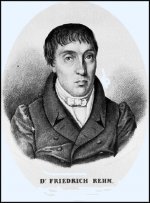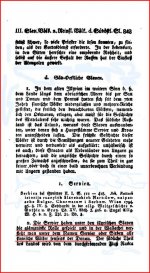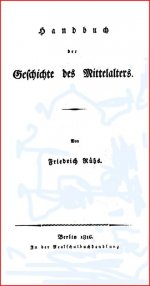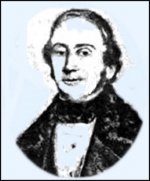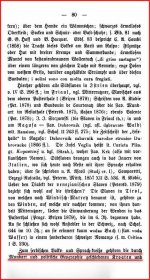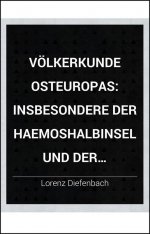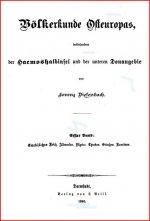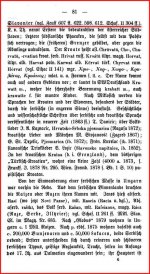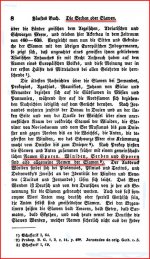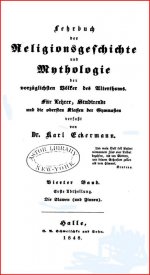A genetic map that introduced confusion in the Balkans
Sometimes the truth stares straight in the face. This is exactly what happens with every check of origin, a key word, which is often and too often associated with the provocative question: "Which is older: a chicken or an egg?"
However, this opinion is not dedicated to the origin of life. There is no motive to tell and retell the origin of the species, although in the work of the same name Charles Darwin emphasized that "man, with his noble qualities, still bears the indelible stamp of his lower origin in his body frame".
So, the topic is not the cause but the method and consequences of what the hereditary so-called haplogroups, the most important link in the interpretation of the ancient origin of all, even the Balkan peoples.
True for $ 100
The biological myth is written in genes. In hereditary matter, which the world-famous Matt Ridley, in the world bestseller Genome, translated into 50 languages, considers to represent "a kind of autobiography of the human species".
An eternal puzzle, which is as intriguing as it is irritating, regardless of the fact that at the beginning of the third millennium, there is a new, cruelly precise scientific method for determining the personal origin all over the planet.
The conditions are, for the most part, affordable. All you need to do is go to the website of several companies that do this business, pay $ 100 and send a sample of saliva swabs in a test tube. After a few weeks, you will receive an e-mail with a larger document, which contains information about your genes.
It is enough that the confrontation with your most distant genealogy can begin, with a concrete and long-desired explanation from which part of Europe, Asia or Africa a certain percentage of your genes originates and where your ancestors moved during the migratory epochs.
The interest exceeded all assumptions. Genetic geography has developed, a special connection between history and prehistory, both functionally and by mapping. So far, more than a million people from various countries have done these tests, and today a sufficient sample has been obtained, on the basis of which a "genetic map of Europe" was made, which included a genetic map of the Balkans. For the first time, a realistic, scientifically proven picture of who and where Bosniaks, Serbs, Croats, Macedonians or Albanians came from was obtained.
This map began to expand at the speed of light. It is especially popular on nationalist internet forums, where it does not stop producing an avalanche of incendiary comments among those who do not know that a nation is not a biological, that is, genetic, but a cultural phenomenon.
The skirmishes were expected given that the results so far on the origins of the Balkan peoples were based on historical writings and it is now superfluous for each Balkan people to quote a historian who allegedly has proof that the people are the oldest, and all others originated. from them.
However, even without them, most people know family generals, about the place of birth of their parents and their closest predecessors. But when asked what continent your ancestor walked on, they just shrug a little embarrassed even though all the information is available on the website of Eupedia, the largest independent organization dedicated to collecting and analyzing the genetics and origins of the peoples of Europe.
Balkan ‘vegetable soup’
The Balkan mix of heritage is not unusual, although Carl Vouse, in the record-quoted book Proceedings of the National Academy of Sciences of the USA, persistently convinces that "life has a physical, not a history of genealogy". However, that is not a consolation to the Balkans because, from the point of view of genetics, there are no typically Serbian, Croatian, Bosniak, Macedonian or Albanian genes. That linear language is written in a straight line.
Or, to put it simply, in culinary terms, we are all a kind of "vegetable soup", which is chopped and mixed. Of course, vegetables are haplogroups. The difference is that one bečar-paprika has a little more carrot, and another has a little more celery. But, no nation can claim for itself that it is strictly a "carrot soup" because it contains too many other ingredients, and even all kinds of spices. And all kinds of spices and additives are an inevitable stumbling block.
This is what Bojana Panić and Ana Banjac Čanak, doctors from the DNA Center for Genetics in Belgrade, claim in at least one voice. After daily analyzes of Y-chromosomes, with which they compile family trees, but also help the police, they emphasized for the 24 Sata newspaper: "It is very difficult to be precise and say where, for example, Serbs come from, since every Balkan nation is a mixture of different nations." ”
However, as M. Kotler said in the Bulletin of the History of Medicine, there is no greater blindness than when we do not want to see something. Probably that is why the Balkan dead race on the origin of the people was decided only in the genetic photo finish.
According to molecular-biological findings, the genetic map disclosed across Europe sheds a whole new light on the centuries-old debate and brings several interesting, undeniable facts. As for the Balkan peoples, the main news is that there are no major differences between them. Serbs and Macedonians are almost completely identical (96 percent), and so are Bosniaks and Serbs. Croats have slightly higher estimates of genes from Western Europe, but compared to other haplogroups, they do not have any significant differences.
Albanians are an exception. Haplogroups E2 and E3 are most widespread in North Africa, more precisely, in Morocco and Algeria. They have appeared in Europe only in the last 2000 years, as the most represented haplogroup among Kosovo Albanians. There are a smaller percentage of those haplogroups among Serbs from the south of Serbia and Kosovo.
Introduction to confusion
Unprepared for a cold shower, Balkan nationalists are in turmoil. To put it mildly, they are confused.
No point was put on the research, but by promoting the latest discoveries, genetics offered concrete evidence that erases all doubts about the origin of Albanians, Bosniaks, Montenegrins, Serbs, Croats and Macedonians. It has finally been proven that folk legends are pure superstition.
Thus, Croats, Bosniaks, Hungarians, Romanians, Bulgarians are closest to Serbs in the biological fraternity, then in a wider circle Czechs, Slovaks, Poles, Austrians, Greeks, Italians, Germans, and very distant in Europe Russians and, say, Moldovans.
This means that almost every Pole is genetically closer to Serbs than almost every Russian, although on the contrary, for most Serbs, an unfulfilled attractive but empty wish is unfulfilled. The paradoxical Serbian desire to adopt a pastoral lifestyle sounds almost like Lamarck's heresy, according to which a blacksmith whose hands have become strong during his life should have children with strong hands, which is an example that the will fails to change the genetic footprint without even pressure.
However, it is obvious that ideological closeness with certain political projects in individuals outweighs genetic closeness. And there is nothing controversial here, except that those individuals for whom ideological brotherhood is more important than genetic brotherhood somehow like to invent and emphasize genetic brotherhood, which they do not have to mask the alleged ideological bias and sell their story based on untruth more easily.
The statement of the "Croat brothers" sounds similar, which is often heard in Serbia in a positive, but also in an ironic context. However, this statement was confirmed as a rule when it comes to the genetic code of the two peoples, which is one of the summaries of the six-year research of DNA profiles of victims (victims) of the Balkans, conducted by the Institute of Forensic Medicine in Skopje. genetic similarity of the Balkan peoples.
"Analysis of the obtained data showed that the inhabitants of Macedonia have the most similar DNA profile with Bulgarians and Serbs, Croats with Bosniaks and Serbs," repeated Dr. Zlatko Jakovski from this Institute, whose results are used for all criminal investigations into victims from this area.
The myth of the great migration of Slavs was shattered
Of course, as always, science is the best remedy against dogmatism, lies and manipulation of all kinds. One should know, however, that genetic maps are not as clear as linguistic ones, but they are more subtle. The findings of Geneva's Igene, supplemented by domestic research, point to such a conclusion.
They shattered the decades-old myth of the great migration of Slavs to the Balkan wasteland because the Slavic gene is little expressed in all today's peoples in the Balkans, including a modest percentage of descendants among Serbs (30 percent), Croats (20 percent) and Bosniaks (15 percent). When everything is added and subtracted, suggests prof. Dr. Omer Ibrahimagic, "Bosnians and Herzegovinians are, to the greatest extent, the heirs of the Illyrians (40 percent), Germans (20 percent) and Celts (15 percent), and only then the Slavs (10 percent).
So, the key to understanding the history of Bosnia and Herzegovina is not in the Slavic but in the Illyrian era, in genetically mixed blood-related haplogroups, very similar for Croats and Bosniaks. According to haplogroups, Albanians are twice as close to Turks as Serbs and Macedonians, and Bosniaks are the furthest away.
And that's not all. No nation has a single haplogroup. We are all a bit "they". That is why all anatomy, physiology, pathology, physical medicine and rehabilitation are taught in all biological-medical studies.
Although the haplogroups do not have final releases either.
https://balkans.aljazeera.net/blogs/2017/4/8/genetska-mapa-koja-je-uvela-pometnju-na-balkanu

